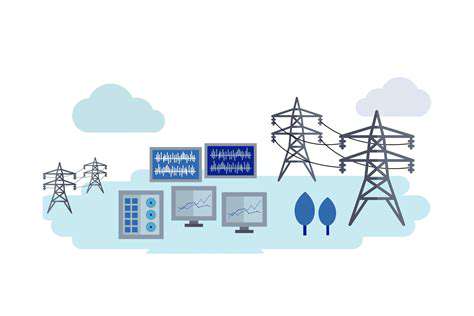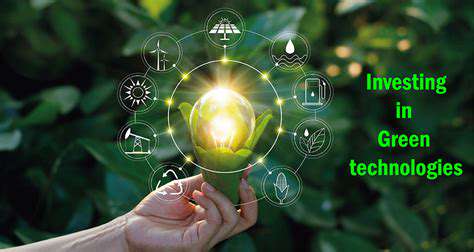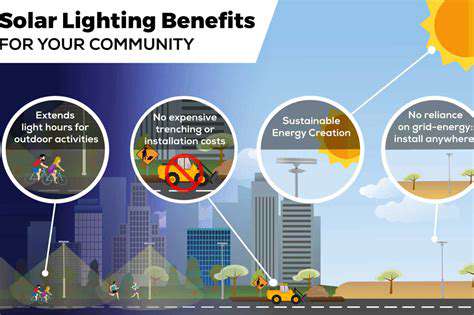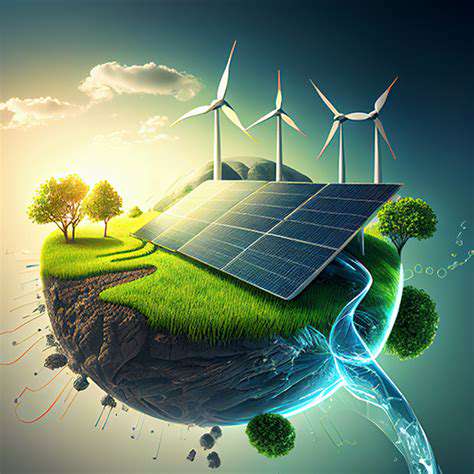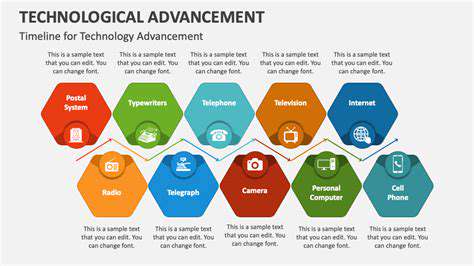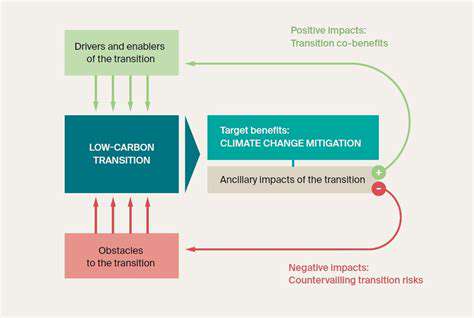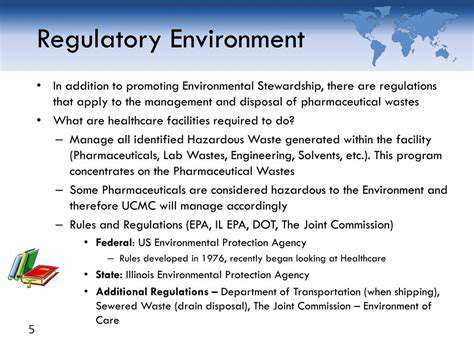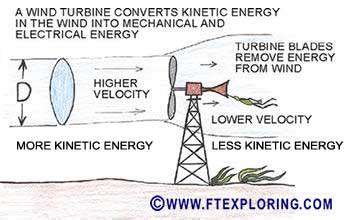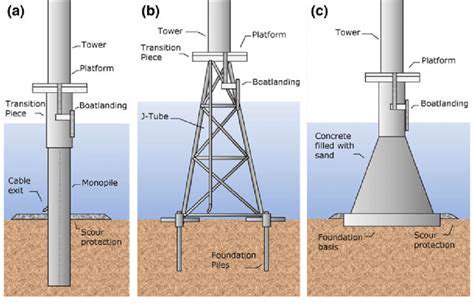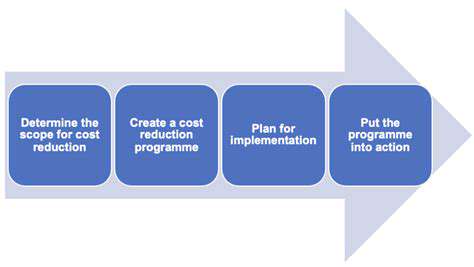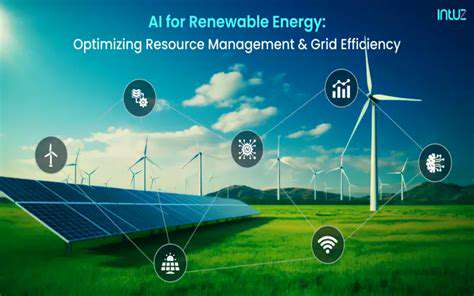Future Proofing Your Energy System with Advanced Energy Storage
Beyond Traditional Lithium-ion: Solid-State Batteries
Solid-state batteries, a promising alternative to lithium-ion, are poised to revolutionize energy storage. These batteries utilize solid electrolytes, eliminating the flammable liquid electrolytes found in lithium-ion batteries. This crucial improvement drastically enhances safety, enabling higher energy density and potentially longer lifespans. The development of advanced solid-state materials is crucial, as current challenges include achieving high conductivity and stability over a wide temperature range, but ongoing research and development are driving significant progress in this area. Solid-state batteries are expected to play a vital role in future electric vehicles and portable electronics, offering a safer and more efficient energy storage solution.
One of the key advantages of solid-state batteries is their inherent safety profile. Eliminating the risk of liquid electrolyte leakage and subsequent fire hazards makes them a significant leap forward in energy storage technology. This safety aspect is particularly important in applications such as electric vehicles where minimizing the risk of accidents is paramount. Furthermore, their potential to deliver higher energy densities compared to lithium-ion batteries opens doors to more powerful and efficient devices and systems.
Harnessing the Power of Flow Batteries
Flow batteries represent a unique approach to energy storage, offering the potential for incredibly high energy storage capacity. Unlike traditional batteries, flow batteries store energy chemically in separate tanks of electrolyte solutions, which are pumped into and out of electrochemical cells. This design allows for modular scalability, enabling the storage of vast amounts of energy for grid-level applications. This modularity also offers the potential for longer lifespans and greater resilience to temperature fluctuations, making them a promising option for renewable energy integration.
A significant advantage of flow batteries lies in their ability to adapt to varying energy demands. Their modular design allows for easily scalable energy storage solutions, making them well-suited for integrating intermittent renewable energy sources into the grid. This adaptability is a key factor in addressing the challenges posed by fluctuating solar and wind power generation. The technology also shows promise for large-scale energy storage, potentially mitigating the intermittency of renewable sources and improving grid stability.
Exploring Emerging Technologies: Supercapacitors and Hybrid Systems
Beyond the established battery technologies, supercapacitors offer a compelling alternative for energy storage, especially in applications requiring rapid charging and discharging cycles. These devices store energy electrostatically, leading to extremely fast charge-discharge rates compared to batteries. Supercapacitors are well-suited for applications like hybrid vehicles and portable electronics, where rapid energy delivery is critical. Their high power density makes them particularly attractive for applications requiring short bursts of high energy.
Hybrid energy storage systems represent a promising frontier, combining the strengths of different technologies to create optimized solutions. Combining the high energy density of batteries with the high power density of supercapacitors in a single system can result in a device that excels in both power and energy storage. This approach could lead to a new generation of devices capable of delivering a wider range of capabilities, from electric vehicles to grid-scale energy storage solutions.
The exploration of these diverse energy storage technologies is critical for future-proofing our energy systems. Each technology possesses unique strengths and weaknesses, and the best approach will depend on the specific application. Ongoing research and development in this area are expected to lead to even more innovative and efficient energy storage solutions in the coming years.
The future of energy storage is not just about improving batteries, but about exploring the full spectrum of options to create a more sustainable and resilient energy infrastructure. These advancements are essential to supporting the transition to a clean energy future.
The Economic and Environmental Advantages of Energy Storage Integration
Energy Storage: A Catalyst for Economic Growth
Integrating energy storage systems into our energy infrastructure presents a compelling opportunity for economic growth. By enabling the use of renewable energy sources like solar and wind, which are often intermittent, energy storage allows for a more consistent and reliable energy supply. This stability fosters a more predictable and attractive environment for businesses, encouraging investment and job creation in the renewable energy sector and related industries, including manufacturing, installation, and maintenance.
Furthermore, the increased reliability and efficiency of energy grids, facilitated by energy storage, can lead to reduced transmission and distribution losses. These savings translate into lower electricity costs for consumers and businesses, boosting economic competitiveness and overall prosperity.
Environmental Benefits: Mitigating Climate Change
The environmental benefits of integrating energy storage are undeniable and crucial in the fight against climate change. Energy storage systems allow us to better manage and utilize renewable energy sources, reducing our reliance on fossil fuels and subsequently decreasing harmful greenhouse gas emissions. This transition towards a cleaner energy future is essential for mitigating the effects of climate change and preserving our planet for future generations.
By reducing reliance on fossil fuels, energy storage systems also contribute to cleaner air quality, minimizing respiratory illnesses and other health problems associated with pollution. This improvement in public health further enhances the overall well-being of communities.
Enhanced Grid Stability and Reliability
Energy storage systems play a critical role in bolstering the stability and reliability of our electrical grids. Intermittency of renewable sources, such as solar and wind, can cause fluctuations in electricity supply. Energy storage acts as a buffer, smoothing out these fluctuations and ensuring a consistent power flow. This improved stability reduces the risk of blackouts and outages, safeguarding critical infrastructure and ensuring uninterrupted service to homes and businesses.
The increased resilience of the grid, thanks to energy storage, is particularly important in the face of extreme weather events, such as hurricanes and storms. By providing backup power during outages, energy storage systems can protect essential services and minimize the disruption to daily life.
Optimized Renewable Energy Utilization
Energy storage is essential for maximizing the potential of renewable energy sources, enabling their integration into the energy mix on a larger scale. Renewable energy sources, like solar and wind, are often intermittent, meaning their availability fluctuates throughout the day and year. Energy storage systems can effectively capture the excess energy generated during peak production periods and release it during times of low generation, thereby ensuring a consistent and reliable energy supply.
Reduced Transmission and Distribution Losses
By enabling the efficient storage and release of energy, energy storage systems help to minimize transmission and distribution losses. These losses occur during the movement of electricity from power plants to consumers. Energy storage systems can help to regulate the flow of electricity, reducing the strain on the grid and minimizing the energy wasted during transmission and distribution. This translates into significant cost savings for utilities and consumers alike.
Cost-Effectiveness in the Long Run
While the initial investment in energy storage systems might seem substantial, the long-term cost-effectiveness of these systems is undeniable. Energy storage systems can reduce the need for expensive upgrades to the electrical grid, minimize the risk of blackouts, and improve the overall efficiency of energy production and consumption. Over time, these savings can outweigh the initial investment, making energy storage a sound investment for utilities and consumers in the long run.
Promoting a Sustainable Energy Future
Energy storage is a vital component in achieving a truly sustainable energy future. It allows us to transition away from fossil fuels towards a clean energy system powered by renewable resources. This transition is not only environmentally beneficial but also economically advantageous, fostering innovation, job creation, and improved energy security. By embracing energy storage solutions, we are building a more resilient, sustainable, and prosperous future for all.
